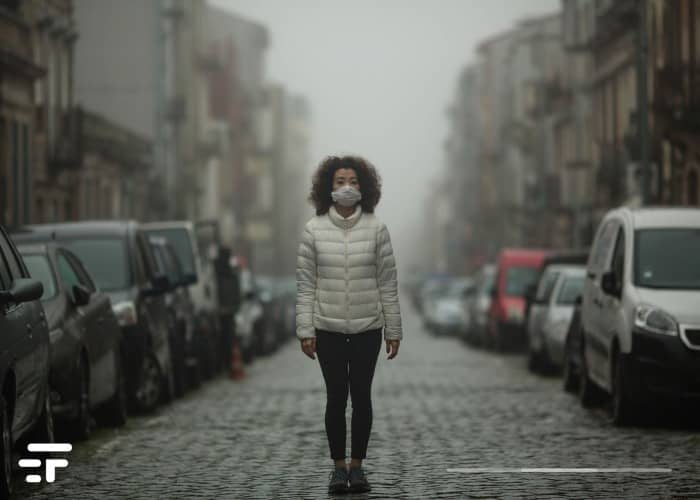With the increase in population in cities, exposure to urban pollution is an increasingly present problem. According to a recent study published in The Lancet Planetary Health, 2,5 billion people live in urban areas where levels of toxic particles exceed World Health Organization (WHO) safety standards, causing more than 1,8 million deaths each year.
According to the study, “the global health burden of environmental fine particulate matter is growing every year,” and is linked to mortality from cardiovascular, respiratory and lung diseases, including cancer. Particulate matter in the air also contributes to asthma, bronchitis and emphysema, as well as being a major environmental hazard for people.
What is particulate matter?
It is a complex of particles suspended in the air which can be solid or liquid. Particulate matter (which makes up much of urban pollution) comes from natural and human sources. Natural ones can be seen when volcanoes erupt, scattering ash and other aerosols high into the atmosphere, but far more dangerous, due to the sheer volume, is man-made particulate matter. It comes from smokestacks, exhaust pipes, power plants, recently cultivated fields, tires running on asphalt and concrete roads, and other human activities that release fine particles into the wind. The lighter and smaller the particle, the greater the threat of urban pollution. This is because fine particulate matter is easier to inhale. It also enters the pores of plant leaves, attaches itself to our buildings, bridges and other infrastructure where its acidic nature causes corrosion. A catastrophe.
Urban pollution, whoever talks about improvements is lying
A particle of 2,5 micrometers (equivalent to 0,00009843 inches) or smaller is a threat to public health. Several agencies track aerosol pollution of this size, noting that particulate matter smaller than 2,5 micrometers has been declining for two decades. The Lancet study contradicts this finding.
Global levels of airborne particulate matter and urban pollution have barely changed in twenty years. Indeed, they have experienced a real boom in different areas of the planet. One above all? Cities of Southeast Asia.
Some data from the study

According to the study in The Lancet, “85% of urban residents worldwide lived in cities that exceeded WHO 2005 standards in both 2000 (1,99 billion people) and 2019 (2,5 billion). Only 16% of all urban areas met WHO 2005 standards between 2000 and 2019.”
Africa, North America and Europe have done better at reducing aerosol pollutants in cities, but particulate matter concentrations in urban areas globally are still at average three times higher than the safety threshold established by the WHO.
This should make us think, and a lot. Also on strategies to combat urban pollution, for example by limiting outdoor activities. Are they effective?
Not so much. Not much, indeed, considering the fact that PM 2.5 can easily make its way both on the street and in homes.
So what can we do about urban pollution?

To cut urban pollution, legislators and city administrators have many weapons at their disposal (if they can, if they want):
- Reduce the number of combustion vehicles on urban roads;
- Investing in electric or hydrogen mass transport to get private vehicles off urban roads.
- Develop alternatives to non-fossil fuels for creating electricity, including solar, wind and geothermal energy.
- Create distributed energy clusters for heated and cooled multi-residential and commercial buildings with renewable alternatives to natural gas.
- Provide financial incentives to homeowners and businesses to replace natural gas with electric heat pumps, passive geothermal, and hydrogen-harvesting electrolyzers.
- Encourage homeowners to install rooftop solar panels, battery backup systems, and power inverters.
- Make the walls of buildings green with climbing plants that clean the air.
- Increase the urban forests building more parks and green spaces.
Regarding the last point, botanists and climatologists agree on the choice of evergreen conifers. For at least two reasons: first, most conifers do not go into winter hibernation and do not shed leaves. Second, the density of conifer needles is more effective against air pollutants, because it “traps” urban pollution. Pines and firs everywhere, in short: taking care however (in case of ice) to reduce road salt, because these plants are more fragile.


